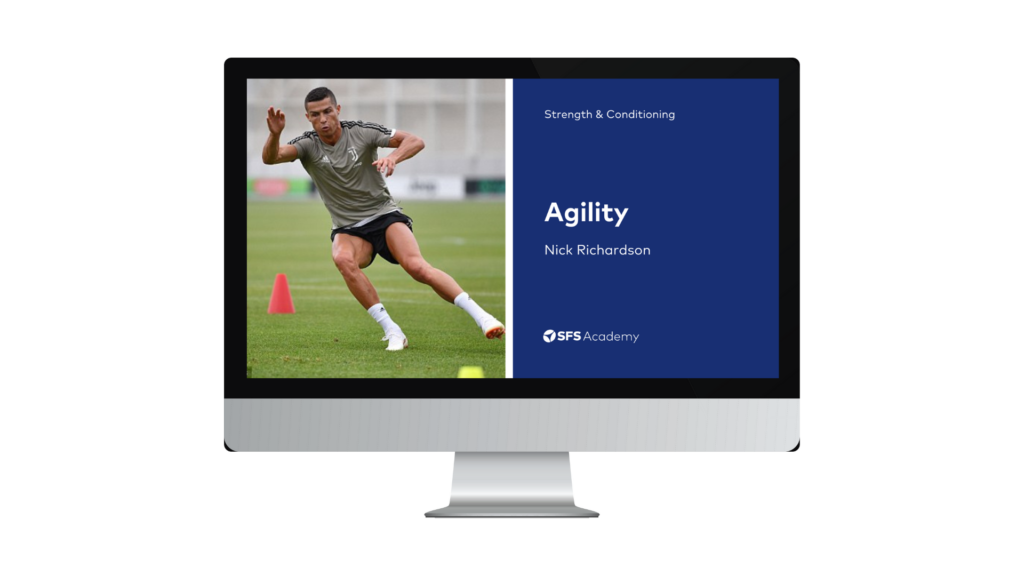

The Vertec device is a simple-to-use, inexpensive, and portable device which can measure an athlete’s vertical jump height.
By Alexander Dear
Last updated: February 29th, 2024
7 min read
Contents of Article
The Vertec device is a simple-to-use, inexpensive, and portable device that can measure an athlete’s vertical jump height. Vertical jump height has been shown to correlate with maximal strength and sprint performance and is therefore of interest to many strength and conditioning professionals.
The Vertec device requires the participant to displace the vanes at the apex of their jump, and therefore, requires at least a single-arm swing. When compared to other measurement devices such as force plates and contact mats, the Vertec has been shown to both over- and under-estimate jump height.

The Vertec jump test is a measure of vertical jump height that uses the Vertec device to measure performance. The test is extremely practical as it uses a simple device which is portable and can be used in a variety of settings to measure performance. To perform the test, the athlete must perform a maximal jump with either a single- or double-arm swing to reach the highest possible vane of the Vertec device (1).
However, the Vertec device has been shown to both underestimate (2, 3) and overestimate (4) performance when compared to a criterion device such as a force plate, contact mat, or a 3-camera motion analysis system. Therefore, the Vertec device may not be a reliable method for measuring lower-limb power and performance.
Application
Vertical jumps are often used as a measurement of lower-body power, and thus as an indirect measure of performance (5). Maximum jump height can provide key information about functional capacity and performance in many sports (6) and is considered an essential motor skill in a range of team sports; including soccer (7), basketball (8), volleyball (9), and handball (10).
As there appears to be a relationship between vertical jump height, 0-30m sprint times (5) and one repetition maximum (1RM) back squat strength (5), it may be a useful measure of performance. This relationship is likely due to the vertical force vectors by which all of these activities (vertical jump, sprinting, and the back squat) are characterised by.
This test may therefore be appropriate for assessing performance in a variety of sports such as handball, basketball, volleyball, Olympic weightlifting, American football, and football (soccer).
It is important for any testing procedure that the conditions remain consistent throughout the assessment session. All tests should be conducted in an environment in which the floor surface and weather conditions are consistent as these could directly affect the results, particularly for a Vertec jump test. Without a consistent environment to test, the results may not be reliable or valid and would, therefore, have to be disregarded.
Required equipment
To conduct the test, it is important to have the following:
*The Vertec device is comprised of plastic swivel vanes arranged in half-inch (1.25 cm) increments which are attached to a metal pole that can be adjusted to the athlete’s reach height. It requires the athlete to use their dominant hand to displace the highest possible vane with an overhead arm swing at the peak of their jump.
Testing procedure
Jump Displacement
If the athlete jumps forwards, backwards or sideways, the results can be affected. The athlete should, therefore, be instructed to jump as high as possible and land on the same spot. If the athlete deviates too far from this point (a landing area/ spot can be marked out), then the result should be disregarded and the jump repeated.
Once the test configuration has been set up and the athlete and assessor are ready, then the test may begin:
Jump height is determined by the difference between the athlete’s standing reach height and the highest vane displaced. The results of the test are reported in terms of jump height (cm/inch).
To ensure a valid and reliable result, it is good practice to take an average of the three jumps performed by the athlete. The following formula can be used to calculate the average jump height:
Alternatively, the best score (i.e. highest jump) out of the three jumps can also be used.
Athletes’ jump height can be affected by a multitude of factors that should be considered when reviewing the results:
Vertical jump testing has been shown to be a valid and reliable measure of lower-body explosive power (5). However, there are doubts over the validity and reliability of the Vertec device as a measurement of vertical jump performance.
Compared to the Optojump system (1) and contact mat (4), the Vertec device has been shown to overestimate vertical jump height. In contrast to these findings, other studies have found that the Vertec device underestimates jump performance when compared to a force platform (considered as the ‘gold standard’) (2) and a 3-camera motion capture system (3).
As a result, it seems as though the accuracy of the Vertec jump test varies depending on the device it is compared to, the testing protocol used (single- or double-arm swing), and the population who perform it (e.g. trained vs untrained). The test also requires coordination of leg and arm movements together to achieve maximal jump height, meaning individuals who are untrained and/or unfamiliar with the test, may not be capable of producing accurate and reliable results.
Therefore, it is recommended that vertical jump heights measured using different protocols, and on different devices, are not used interchangeably.
References
Learn how to improve your athletes' agility. This free course also includes a practical coaching guide to help you design and deliver your own fun and engaging agility sessions.
Alex is currently studying for a Master of Science degree in Physiotherapy and working as a sports massage therapist. He is researching the effect of attentional focus on athletic performance and also has a MSc in Chemistry (1st Class Honours).
Learn from a world-class coach how you can improve your athletes' agility. This course also includes a practical coaching guide to help you to design and deliver your own fun and engaging agility sessions.